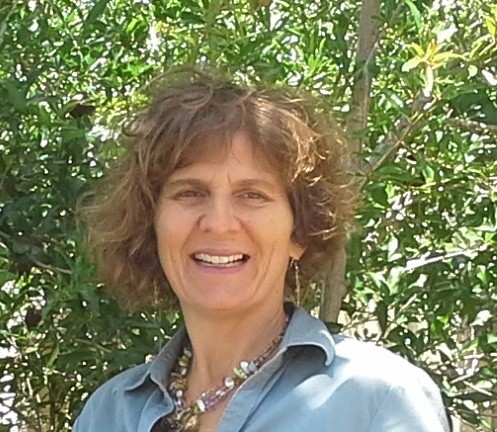Higher Education - Fundraising to Thrive
Higher education institutions are no longer able to survive on state support alone, as governmental budgets are being stretched to their limits.
When Ms. Liora Asa first began lecturing for our higher education programmes in 2010, 95 percent of the participants reported that their university is funded by the state, with only some from private institutions that relied on fundraising. During the past seven years she has witnessed a growing shift. “Today everybody worries that they will not have enough money,” she says, “But not everybody has a deep enough understanding of what will lead their institution to become an effective, proactive fundraising university.”

Encouraging participants to become agents of change at home, Asa emphasises that creating a strategy to diversify their funding base is a long term process that requires leadership, organisational learning, investment in research and giving the process time to bear fruit. “The strategic resource development plan is only the end result of a much deeper process that is essential to the success of the fundraising efforts,” she stresses. If your organisation is currently receiving funding from the government, this is the perfect stage to begin the process. Crisis often gives an immediate push, but it does not afford the time necessary to gradually change the organisational culture, neutralise resistance, persuade the right people in the university to get on board, and decide which sources are realistic and aligned with the institution’s core values and goals.
Who is Responsible for Fundraising?
In the past, administration had the luxury of being reactive to fundraising. If donors came to visit, they would show them around, if there was a grant available they would submit for it. Today institutions must be proactive. It is not enough to establish a Department of Resource Mobilisation with a steering committee responsible for fundraising.
The President and trustees must be the most involved, says Asa. The next tier of soldiers is the Office of Resource Mobilisation. Finally, there must be another tier comprised of the deans of the schools. The deans take responsibility to fundraise for their own schools in an effort that is coordinated through the President and the Office, which encourage healthy interaction between the schools and make sure that one does not receive disproportionate funding on account of the others.
Getting deans to accept fundraising as part of their responsibilities is no small effort. They must be persuaded with the benefits – a good reputation, better resources, ability to serve students better, contributing to the health of the organisation, etc.
The university should also be very careful not to hire deans solely for their fundraising ability at the expense of academic ability. The means and the end should not be confused and the institution must not lose sight of its core values, history, roots, organisational culture and vision.
“In a fundraising university, one which is minded across board, a dean will never go to a conference abroad without looking around the room to develop both academic relationships and fundraising opportunities,” says Asa. “In a successful scenario, all this is filtered through a president with a clear vision of the institution’s role in society, who is willing to be a leader in terms of fundraising and endows a staff with the means by investing in skills development.”

Enough Time to Learn
“75% of the efforts in fundraising involve learning, research, mapping out and strategising, even before contacting sources for the first time,” explains Asa.
First, those involved must direct their energy towards diversifying the institution’s income sources. When it has been in the custom of turning to only one or two main sources of income for years and its staff has a lot of knowledge on how to do well what it has always done, it is then a process to develop new skills and acquire new expertise.
Then the university needs to decide which new sources of income are relevant to the institution. Is corporate giving a trend in the university’s region? Did alumni have a positive enough experience as students to want to give back? Are there diaspora communities that want to reconnect with their roots? Is there an up and coming middle class in the city that might seek professional opportunities by connecting to higher education?
Alumni associations, too, are not built over night. “It actually begins with their experience when they were studying at the university,” says Asa, “If it was negative it cannot be fixed.” In that case a university can begin to invest in today’s students by opening doors for them professionally, creating networking forums, inviting them to the university for lectures on issues that matter to them. When these students graduate, it should continue to cultivate the relationship and begin to steward them and integrate them into the programme.
The Road Map
1. Deciding what role the university plays in society and map out the environment in which they operate. What roles do other universities fill? What is our unique selling point?
2. Strategically mapping out opportunities and threats.
3. Investing in learning deeply about each potential source of income and in staff skills development, required for that specific income source.
4. Getting the right people on board and making sure that everyone has a clear understanding of what the educational vision of the academic institution is and its unique role within society.
5. Setting clear funding objectives (how much will be raised year 1, year 2, year 3) and defining clear process objectives of how to get there.
A university should not diversify too quickly, focussing on one new source at a time (ex/now only alumni, next businesses, then corporations, then individuals…).
Often initial investment is necessary before the institution is able to pick the fruits, but there is no doubt that it pays off.
“Becoming a fundraising university is a hugely empowering process,” says Asa. The university increases its independence and strengthens its position to decide for itself what its priorities are and where it is investing. The process asks the institution and its faculties to take a very deep look at who they are, what their role is in society, the quality of the learning process their students go through and the kinds of graduates they are sending out into the world.
***
Ms. Liora Asa engages participants in interactive lectures on resource mobilisation, diversification of funds and creating a strategic plan in our Management of Higher Education Institutes programme.

